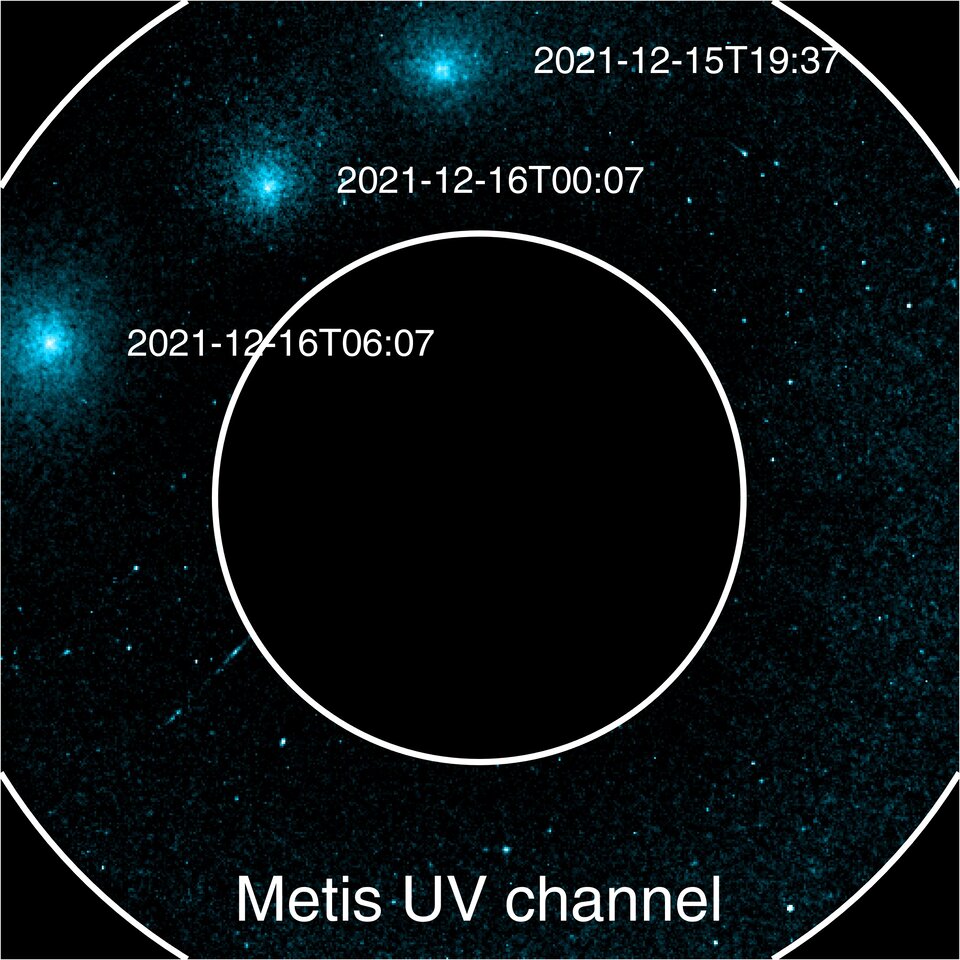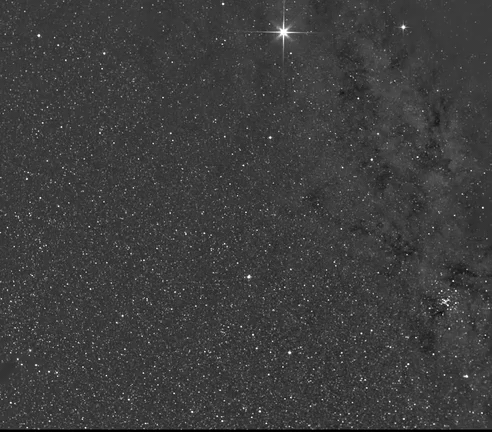(This is a shortened version of a news article published by ESA.)
For a spacecraft designed to conduct unique studies of the Sun, Solar Orbiter is also making a name for itself exploring comets. For several days around 17 December 2021, the spacecraft found itself flying through the tail of Comet C/2021 A1 Leonard. The encounter captured information about the particles and magnetic field present in the tail of the comet. This will allow astronomers to study the way the comet interacts with the solar wind, a variable wind of particles and magnetic field that emanate from the Sun and sweep through the solar system.
 At the time of the crossing, Solar Orbiter was relatively close to the Earth having passed by on 27 November 2021 for a gravity assist manoeuvre that marked the beginning of the mission’s science phase, and placed the spacecraft on course for its March 2022 close approach to the Sun. The comet’s nucleus was 44.5 million kilometres away, near to the planet Venus, but its giant tail stretched across space to Earth’s orbit and beyond.
At the time of the crossing, Solar Orbiter was relatively close to the Earth having passed by on 27 November 2021 for a gravity assist manoeuvre that marked the beginning of the mission’s science phase, and placed the spacecraft on course for its March 2022 close approach to the Sun. The comet’s nucleus was 44.5 million kilometres away, near to the planet Venus, but its giant tail stretched across space to Earth’s orbit and beyond.
So far, the best detection of the comet’s tail from Solar Orbiter has come from the Solar Wind Analyser (SWA) instrument suite. Its Heavy Ion Sensor (HIS) clearly measured atoms, ions and even molecules that are attributable to the comet rather than the solar wind. In addition to the particle data, Solar Orbiter also acquired images. Metis is Solar Orbiter’s multi-wavelength coronagraph. It can perform ultraviolet observations that see the Lyman alpha emission given out by hydrogen, and it can measure the polarisation of visible light. During 15 and 16 December it captured the distant head of the comet simultaneously in both visible and ultraviolet light (image right). The visible light images can hint at the rate at which the comet is ejecting dust, while the ultraviolet images can give the water production rate.
The Solar Orbiter Heliospheric Imager (SoloHI) also captured data. These images below show large parts of the comet’s ion tail taken while the spacecraft itself was inside the tail. As the image sequence progresses, changes in the tail can be seen in response to variations in the solar wind speed and direction. And it was not just Solar Orbiter that was watching the crossing. The ESA/NASA SOHO mission and NASA’s STEREO-A and Parker Solar Probe spacecraft were observing from afar. This means that not only do astronomers now have data from inside the tail, they also have contextual images from these other spacecraft.

Comet tail crossings are relatively rare events. Of those that have been detected, most have been noticed only after the event. The ESA/NASA Ulysses mission encountered three comet ion tails. Solar Orbiter itself crossed the tail of fragmenting comet C/2019 Y4 ATLAS in May and June 2020, shortly after launching. “This kind of additional science is always an exciting part of a space mission,” says Daniel Müller, ESA Project Scientist for Solar Orbiter. “When the comet ATLAS crossing was predicted, we were still calibrating the spacecraft and its instruments. Also, the comet fragmented just before we got there. But with Comet Leonard we were totally ready – and the comet didn’t fall apart.”
In March, Solar Orbiter make its closest pass to the Sun yet at a distance of 0.32 au (approximately one-third of the Earth-Sun distance, or about 50 million kilometres). It is one of almost 20 close passes to the Sun that will occur during the next decade. These will result in unprecedented images and data, not only from close up, but also from the Sun’s never-before seen polar regions.
The Extreme Ultraviolet Imager (EUI) team at ROB is currently planning the observations that will be made during the March perihelion. Exciting times are ahead!





